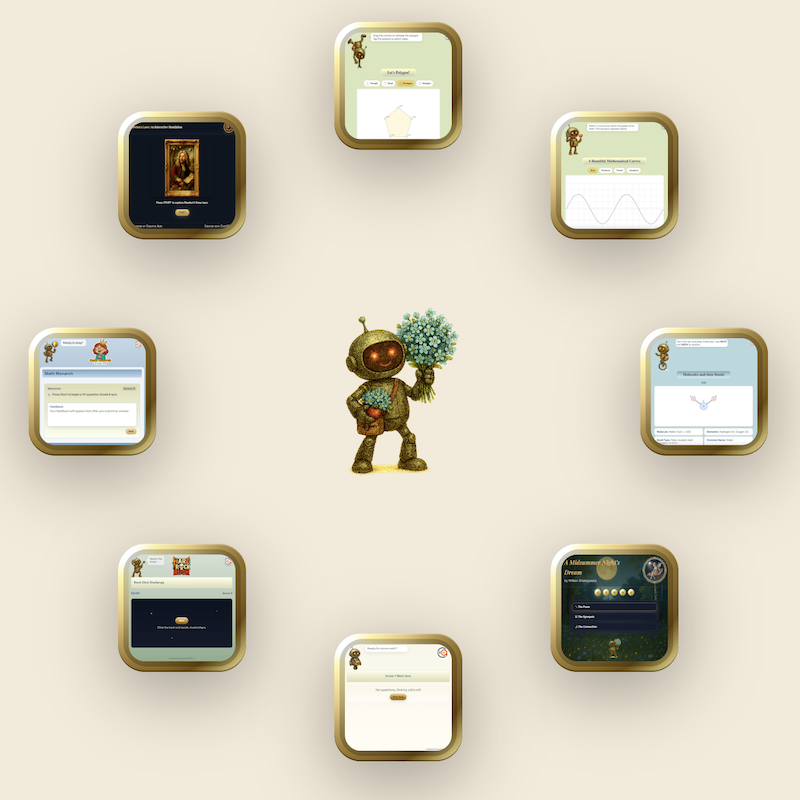I tried…
eLearning Storyboarding with AI
AI can storyboard. Just the way everyone can draw. Those who work in eLearning development will tell you that there’s a vast difference between an instructional designer and a content developer – and that a good instructional designer must count empathy among her many skills.
So the question, “Is AI the new Instructional Designer?” is a loaded one. As of today, the answer is “No.” But tomorrow, with the accelerated pace of AI development, this answer may quickly change to “Yes.” There are reasons why I say that AI is not the new ID:
Currently, AI doesn’t have the instructional framework (which its future versions can acquire with little or no difficulty,) which will enable it to create instructionally effective content.
In my experiment of storyboarding with ChatGPT-3, I discovered that:
- AI creates a basic template of a storyboard that lays out instructions that skim the surface.
- It includes pre-built interactions (it can expand, say a drag and drop activity by listing the draggable items – if prompted correctly,) but it cannot spin instructionally sound interactions off on its own – at least not with the GPT3 version. Perhaps Auto-GPT will recursively be able to create a much better elearning storyboard.
- AI cannot make required connections between the psychographics of the audience and the presentation of the content.
ChatGPT-3 had me surprised and worried!
I was left with two diagonally opposite feelings. ChatGPT 3 surprised me by creating a tabular structure (that my prompt asked it for) and populating it correctly, though not adequately, with the right elements. It also scared me – because if it can get this close to storyboarding, I wonder what its successors might become capable of doing. (Please view/download the documentation of my storyboarding experiment on LinkedIn here.)
We are close to it. Close to what, you may ask. Honestly, I have no clear answer for it. I am not an AI engineer. I am only a user of AI, but I think we are close to creating an entity with the power to self-determine. With self-determination, AI might decide to conquer the final frontier and teach itself to become sentient.
Self-Directed AI vs. The Adult Learner
I am also not an AI Doomer – I am all for AI as long as it stays a tool. Unfortunately, the problem with AI is that it learns, and while until GPT-3, its learning was completely managed and directed by humans; GPT-4 (exemplified by Auto-GPT) takes a peek into self-directed learning. Self-directed learning is the trait that characterizes the adult learner (Knowles’ Andragogy.) Self-directed learning is goal-oriented and focused – and we choose our goal and direction – and even decided how far we are willing to travel to find the object of our quest.
Will AI kill us all? Honestly, I don’t think it will. It will need us. Will it usurp the cognitive tasks and chalk out a new and revolutionary path into the future? If it combines its crazy computing power and super-connectivity with self-direction…possibly yes. The question that we must answer, better sooner than later, is: how much are we willing to empower this blue-eyed baby of humanity?
The Open Letter: “Pause Giant AI Experiments”
The “Pause Giant AI Experiments” letter, signed by those who’ve themselves nurtured AI, wants us to pause, take a deep breath, and review where we want to go in empowering the AI. If you’ve not signed the Open Letter, please check it out. You can also download the PDF of the letter to read it later. The first signatory of this letter is Yoshua Bengio, one of the pioneers in the field of AI. The list also includes the names of CEOs, Harvard Professors, AI Researchers and many others. I signed it this morning. I think it’s time we paused. It’s time for reflection.
Thank you.





Leave a Reply